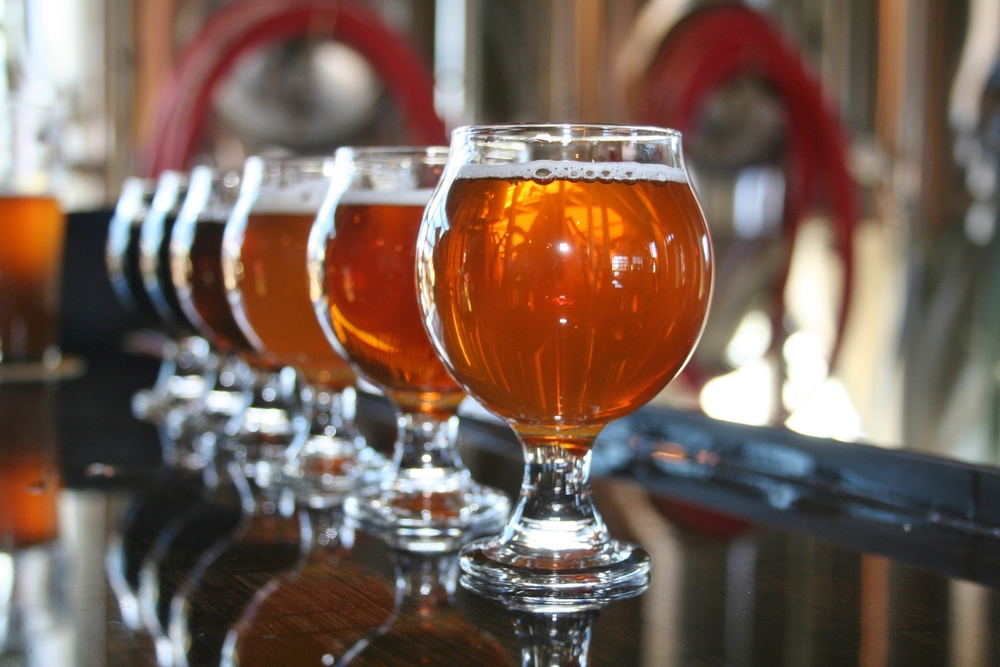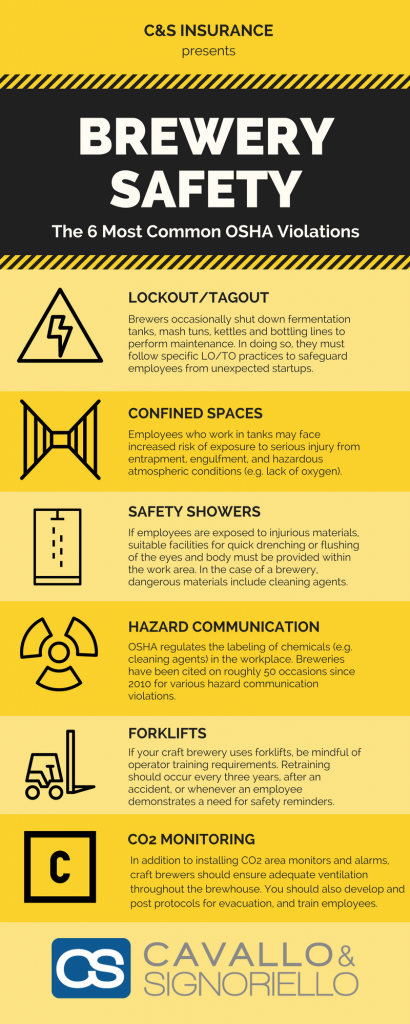Focus on Craft Brewery Safety: Avoiding OSHA Violations

But like any startup or emerging industry, craft brewers are not immune to growing pains. And for some, safety is a significant challenge. The facts are (to use a pun) sobering:
- Between 2011 and 2003, craft breweries were cited for 547 safety violations (nearly half of them considered “serious”).
- During that same timeframe, large breweries (making ten times more beer) were cited for just 151 violations.
- Experts say brewery employee injuries are widely underreported, impeding OSHA and state officials from identifying key gaps in safety protocols/training.
Here are some of the most common OSHA violations for craft breweries and advice on how to avoid them:
29 CFR 1910.146—Permit-required Confined Spaces
Brewers spend time cleaning, servicing and performing maintenance inside equipment such as fermenters, grain silos, mash tuns and kettles. OSHA inspectors commonly cite breweries for failure to provide safe practices while working in such confined spaces.
How to Avoid This Violation
OSHA requires several safeguards to ensure safety in confined spaces that could pose hazards to a worker, including the following:
- A written confined-space permit program—OSHA requires a written program that identifies and evaluates the hazards that may be present. It also requires testing the atmospheric conditions of a confined space, and includes instructions for summoning rescue and emergency services.
- Entry permits—Employees must receive an entry permit, signed by the entry supervisor, before performing work in a confined space.
- Worker training—Employers must provide all necessary training for employees who may enter a permit-required confined space.
5A0001—OSHA General Duty Clause
Brewers often transport heavy kegs, bags of grain and other raw materials. Since OSHA does not yet have a specific ergonomics standard, breweries can be cited under the OSHA General Duty Clause, which mandates that employers provide a workplace “free from recognized hazards that are causing or are likely to cause death or serious physical harm.”
How to Avoid This Violation
Ergonomic injuries are a recognized hazard, which means employers are at risk when they fail to mitigate the dangers associated with improper lifting tasks. Ways to mitigate such risks include the following:
- Regularly train and retrain employees on proper lifting techniques.
- Provide proper tools and equipment—such as forklifts—for lifting heavy items, and ensure employees are properly trained to use them.
- When possible, adjust employees’ schedules so they’re sharing lifting responsibilities equally.
29 CFR 1910.119—Process Safety Management of Highly Hazardous Chemicals
Breweries commonly rely on ammonia refrigeration to keep their supplies cold. However, some brewers fail to realize that ammonia is one of the dangerous chemicals covered under 29 CFR 1910.119, OSHA’s regulation for preventing or minimizing the release of toxic, reactive, flammable or explosive chemicals.
How to Avoid This Violation
Breweries can avoid being cited for this violation and keep employees safe by doing the following:
- Develop a process hazard analysis in accordance with the standard.
- Outline processes for operating and emergency use of refrigeration systems.
- Create written procedures, and train employees to maintain relevant equipment.
29 CFR 1910.147—The Control of Hazardous Energy (Lockout/Tagout)
Lockout/tagout (LOTO) violations are among OSHA’s most common citations each year. Employers must adhere to specific LOTO practices and procedures to protect employees from the unexpected startup of machinery and equipment.
How to Avoid This Violation
- Create a LOTO program that protects employees from all sources of hazardous energy (including electrical energy, hydraulic pressure, gravity and heat).
- Create written procedures that cover the control of hazardous energy.
29 CFR 1910.1200—Hazard Communication
Craft breweries are often cited for violations related to OSHA’s hazard communication regulation, which governs the labeling of chemical hazards in the workplace.
How to Avoid This Violation
- Develop a hazard communication plan.
- Make sure chemicals are completely labeled and accompanied by safety data sheets.
- Train employees on how to handle and monitor the presence of chemicals.
If you own a microbrewery and you have questions about the adequacy of your safety program (policies, communication, employee handbooks, etc.), you don’t have to tackle safety alone. The Brewers Association provides several downloadable resources on the topic of craft brewery safety, along with a helpful email forum for more specific questions about OSHA inspections and good manufacturing practices. The right brewery insurance agency can and should also be an instrumental partner.
Contact our team for more information on assessing your risk profile. Meanwhile, the following infographic highlights some of the most common craft brewery safety issues from an OSHA inspection standpoint:

